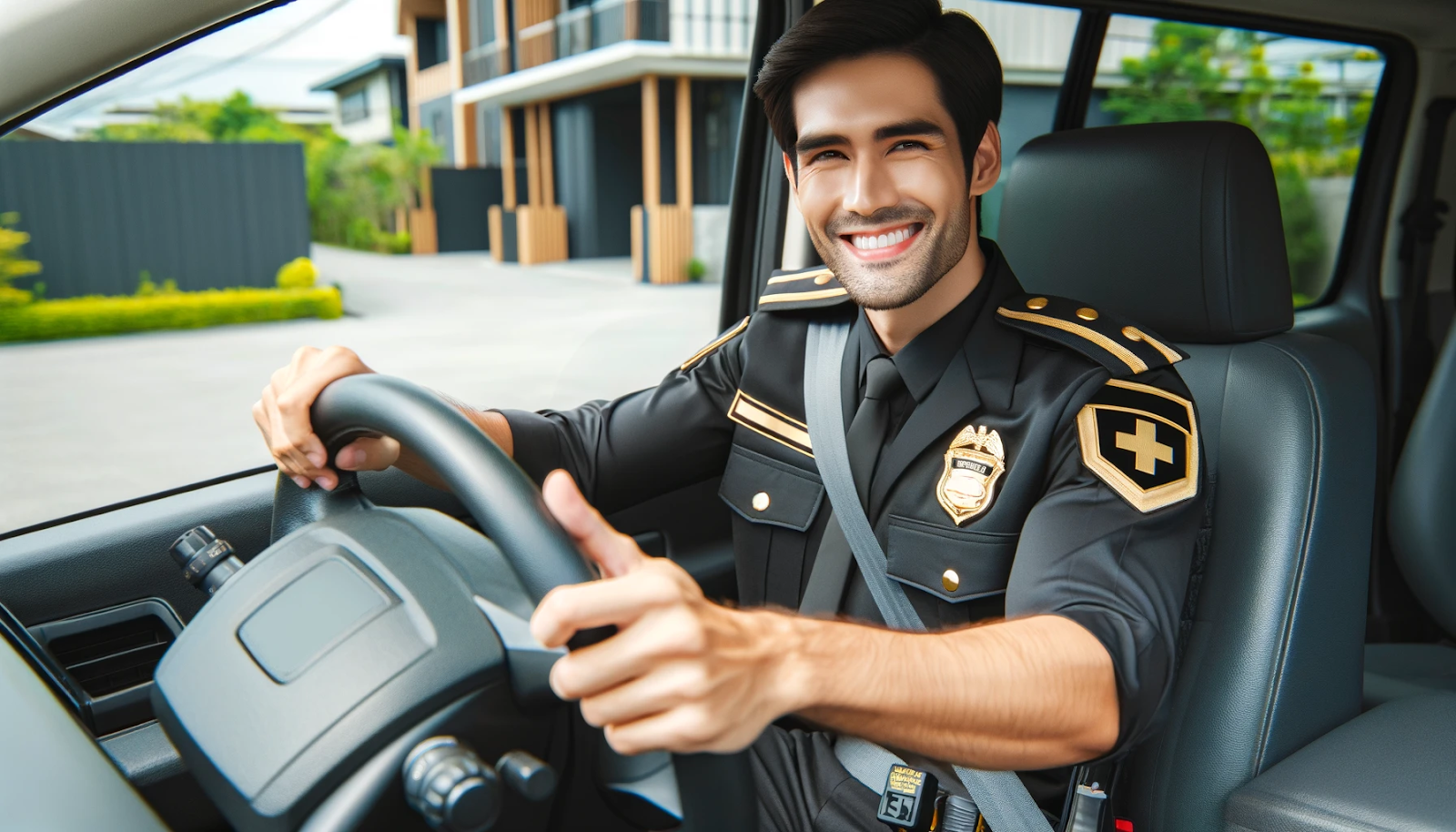Mobile security patrols play a critical role in maintaining safety and order on various properties. Ensuring that security guards practice safe driving is paramount for property managers, chief security officers, and security company hiring managers. Here are some essential tips and best practices for security guards performing mobile patrols or driving as part of their duties.
Prioritize Vehicle Maintenance
- Regular Inspections: Conduct daily checks on the patrol vehicle, including tire pressure, oil levels, brake function, and lights.
- Scheduled Maintenance: Stick to a strict maintenance schedule for oil changes, brake pads replacement, and other critical components.
- Emergency Equipment: Ensure the vehicle is equipped with emergency supplies such as a first-aid kit, fire extinguisher, and spare tire.
Stay Focused and Avoid Distractions
- Minimize Mobile Use: Use hands-free devices if you need to communicate while driving. Avoid texting or using apps.
- Stay Alert: Keep your focus on the road and surroundings. Avoid eating or engaging in activities that can distract you from driving.
- Plan Your Route: Familiarize yourself with the patrol route before starting your shift to reduce the need for navigation while driving.
Follow Traffic Laws and Speed Limits
- Obey Speed Limits: Always adhere to the posted speed limits, even in a hurry. Speeding can increase the risk of accidents.
- Use Signals: Always use turn signals when changing lanes or making turns to inform other drivers of your intentions.
- Right of Way: Respect other drivers' right of way to avoid collisions and promote safe driving practices.
Practice Defensive Driving
- Stay Aware: Constantly scan the road for potential hazards, such as pedestrians, animals, or other vehicles.
- Maintain Safe Distance: Keep a safe distance from the vehicle in front of you to allow ample time for stopping.
- Adapt to Conditions: Adjust your driving based on weather conditions. Slow down during rain, fog, or snow to maintain control of the vehicle.
Enhance Visibility and Communication
- Proper Lighting: Ensure all vehicle lights are functioning correctly. Use headlights in low visibility conditions.
- Use Reflective Gear: Wear reflective vests outside the vehicle at night or in low-light areas.
- Clear Signage: Ensure the patrol vehicle is marked clearly to be easily identifiable to the public and other security personnel.
Emergency Procedures and Response
- Know Your Protocols: Be familiar with your company's emergency response protocols and follow them meticulously.
- First Aid Training: Have basic first aid training to assist in minor injuries or health emergencies.
- Report Incidents: Immediately report any accidents, injuries, or suspicious activities to the appropriate authorities.
Vehicle Safety Checks
- Pre-Shift Checks: Before starting a shift, check the vehicle’s fuel levels and tire condition and ensure all safety equipment is present and functional.
- Post-Shift Checks: Report any vehicle issues or damages after your shift so they can be addressed promptly.
- Daily Log: Maintain a daily log of the vehicle's condition and any incidents that occur during the shift.
Effective Communication
- Two-Way Radios: Use two-way radios to constantly communicate with your base or other patrol units.
- Emergency Contacts: Have a list of emergency contacts readily available, including local law enforcement and medical services.
- Clear Reporting: Be clear and concise when reporting incidents, providing all necessary details to ensure a swift response.
Training and Continuous Improvement
- Ongoing Training: Participate in regular training sessions to stay updated on the latest driving safety practices and protocols.
- Scenario Drills: Engage in scenario-based training to prepare for various potential situations you might encounter on patrol.
- Feedback and Review: Regularly review your performance with supervisors to identify areas for improvement and receive constructive feedback.
Frequently Asked Questions (FAQs)
Q: What should I do if I encounter a suspicious person on patrol?
A: Maintain a safe distance, observe and take note of their behavior, and report the incident to your supervisor or local law enforcement.
Q: How often should I conduct vehicle inspections?
A: Conduct pre-shift inspections daily and follow the manufacturer's maintenance schedule for more detailed checks.
Q: What is the best way to handle inclement weather on patrol?
A: Slow down, use appropriate lights, maintain a safe distance from other vehicles, and stay alert to changing conditions.
Q: How can I stay alert during long patrol shifts?
A: Take regular breaks, stay hydrated, and eat light snacks to maintain energy levels. Ensure you get adequate rest before your shift.
.png)
.png)
.png)

.png)
.png)

.png)
.png)
.png)
.png)
